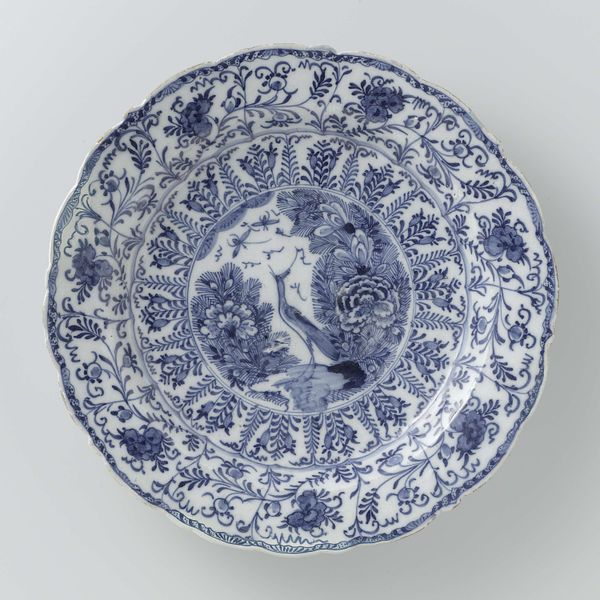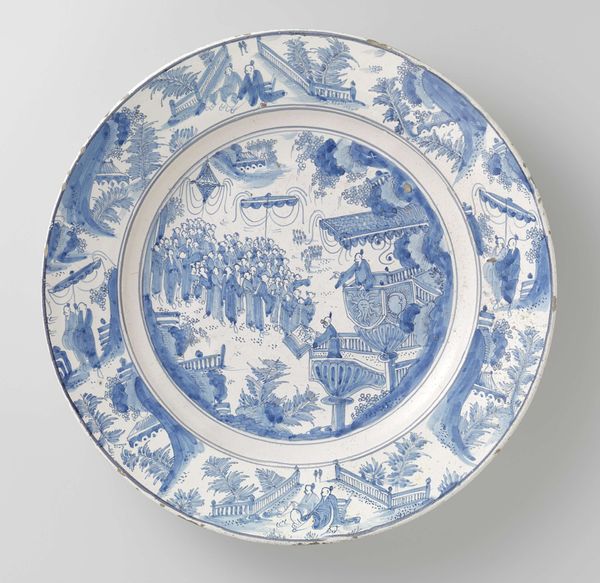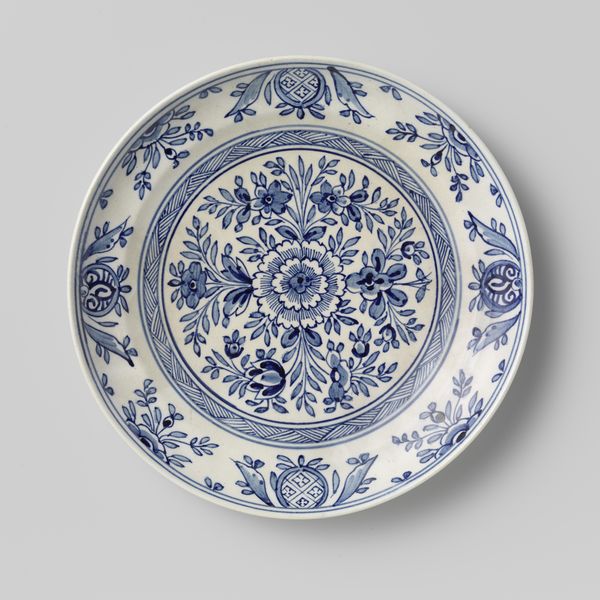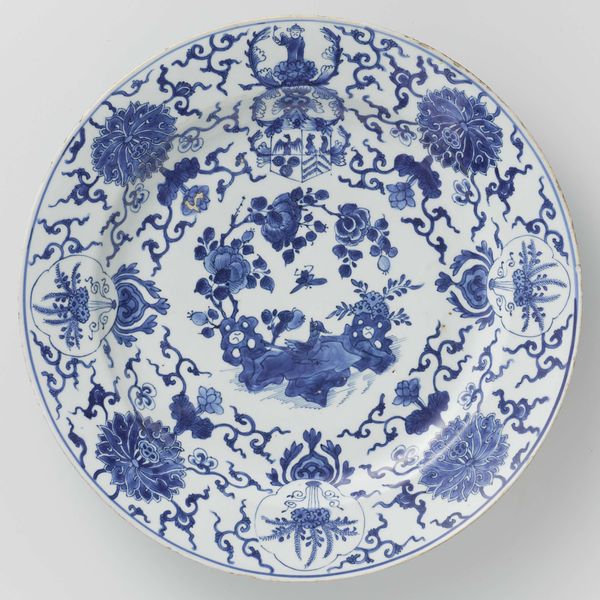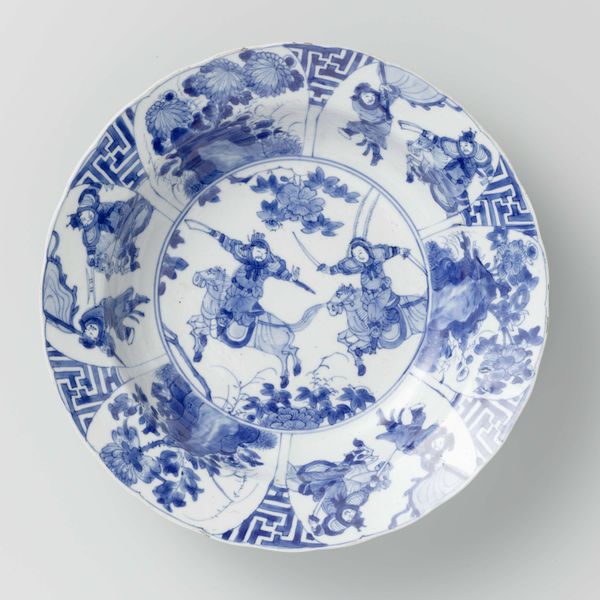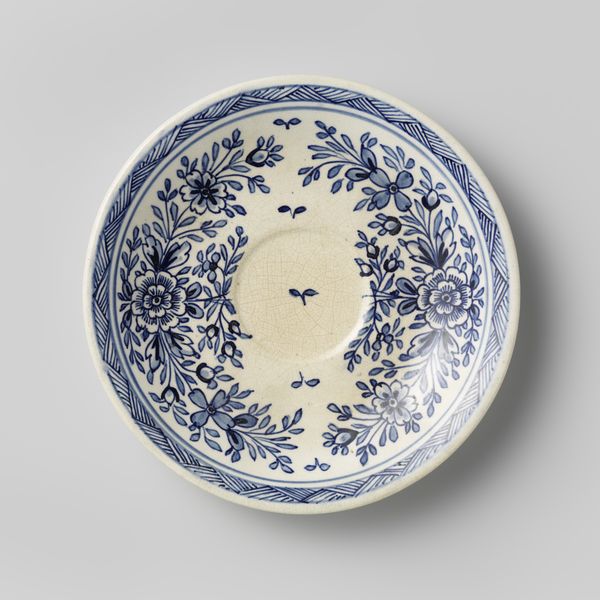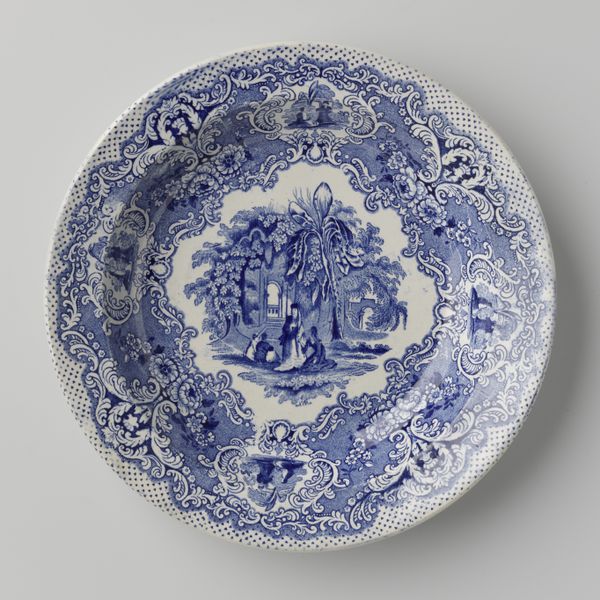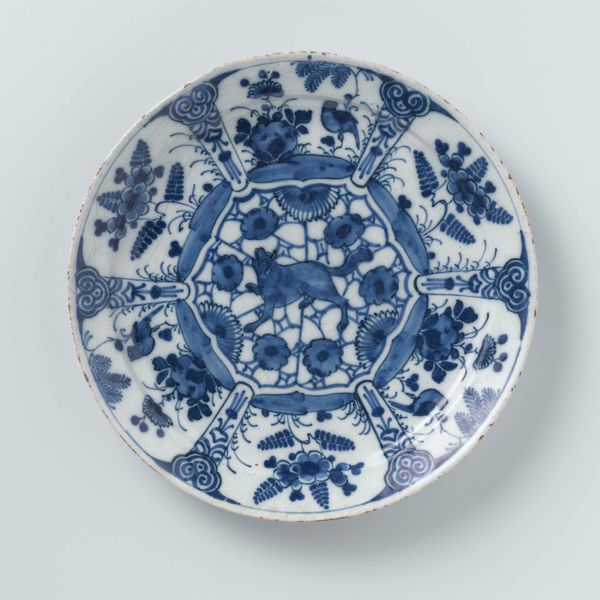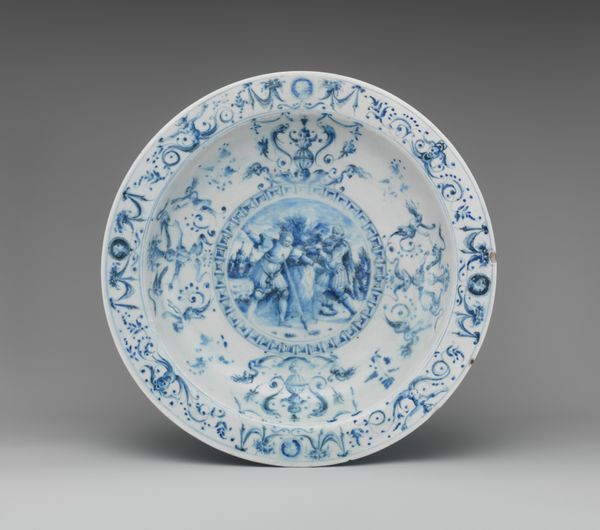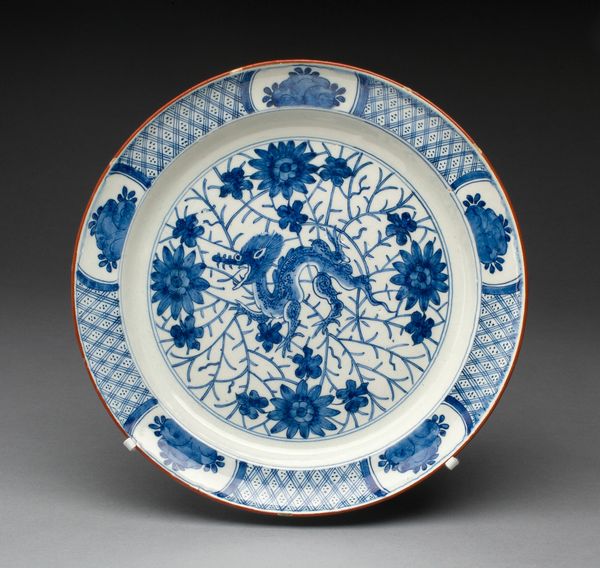
ceramic, earthenware
#
landscape
#
ceramic
#
figuration
#
earthenware
#
stoneware
#
orientalism
#
ceramic
Dimensions: height 2.7 cm, diameter 26.6 cm
Copyright: Rijks Museum: Open Domain
Editor: Here we have "Bord, met op het plat een man op kameel in oosters landschap," a ceramic plate made around 1859-1863 by Guillaume Lambert. The detailed blue and white scene is striking! It seems to depict a romanticized vision of the East, but applied to a fairly common object. What do you see in this piece, focusing on the material and how it’s used? Curator: Absolutely! Considering this object materialistically, we must explore the social implications of earthenware production and the adoption of "exotic" imagery. It appears transfer-printed, allowing for mass production. What does that suggest about its intended consumer and their relationship to the depicted scene? Editor: It feels like this plate provided an accessible piece of "high" culture, allowing the everyday consumer to engage with Orientalist fantasies, without necessarily possessing deep understanding of them. Curator: Precisely! And think about the labour involved – from the mining of the clay, the factory workers operating the printing presses, to the consumer purchasing it. Can this plate be interpreted as a commodity embodying labour exploitation in its material form and idealized scene? Editor: That's a jarring contrast: luxury for some, labor for others. Also, thinking about the transfer process – the initial engraving would have been a skilled artisan’s labor before mass reproduction, which speaks to art and labor being intertwined. Curator: Exactly! Consider how the seemingly innocuous everyday object implicates larger global dynamics of trade, labour, and consumption and colonial power. How does examining the 'means of production' change your reading of the idyllic landscape? Editor: It complicates it massively! It pushes us to question the privileged perspective embedded in its very production. The material is not simply inert; it’s loaded with historical context and socioeconomic power. Curator: Exactly! It also makes us reconsider the divisions of craft and design; it is not just "applied art," but rather deeply entrenched in both manufacture and cultural projection. Editor: It really emphasizes how essential it is to unpack the materials and production processes behind seemingly decorative pieces to see the broader picture of their historical meaning. I will definitely never look at a ceramic the same way again.
Comments
No comments
Be the first to comment and join the conversation on the ultimate creative platform.
